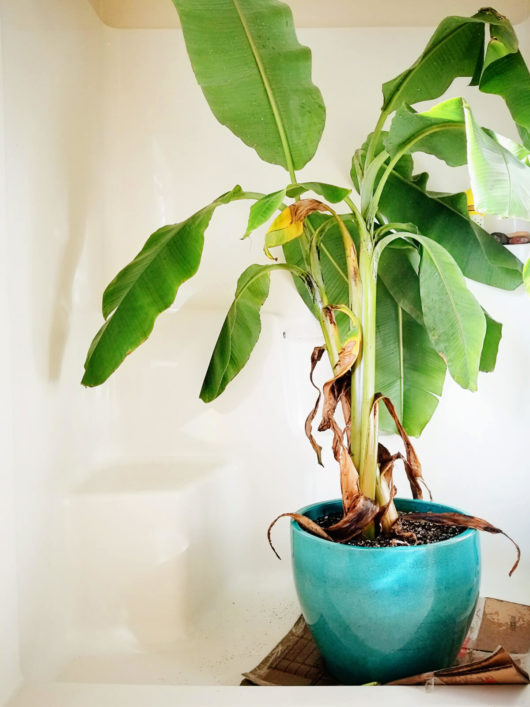
Spring has sprung, although it doesn’t really feel like it here when the forecast is calling for more snow this week. But there’s something about the official start of spring that makes me want to throw open the doors and windows and freshen up the whole house.
Part of my spring cleaning ritual (that I actually do once every few months, but especially at the end of a long, dry winter) is to give all my houseplants a cool, cleansing shower. I put several plants — even my banana tree — under the shower for a few minutes, rinsing the tops and undersides of the leaves and drenching the soil until water flows freely out the bottom of the pots. This thorough washing not only nourishes and hydrates your plants more than their usual drink, but has other benefits too.
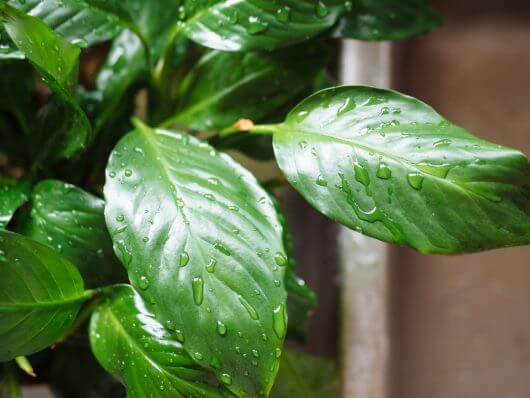
The occasional shower helps counteract the low humidity and indoor heating that’s prevalent in winter, removes dust and dirt that may have accumulated on the leaves, allows the plant to “breathe” and photosynthesize more efficiently, and rinses away any pests and their eggs. (Spider mites, in particular, love to hang out on dusty leaves.) Think of it as a deep cleaning for your houseplants, since hand dusting only removes surface dust (and sometimes, merely smears it around).
Container plants don’t have the benefit of being surrounded by large amounts of soil to help distribute minerals in their environment, so excess salts (usually fertilizer residue) can build up over time. They’re usually seen as a ring of white, crusty salt deposits around the pot at the soil line and around the drainage hole, and sometimes appear on the exterior of clay pots.
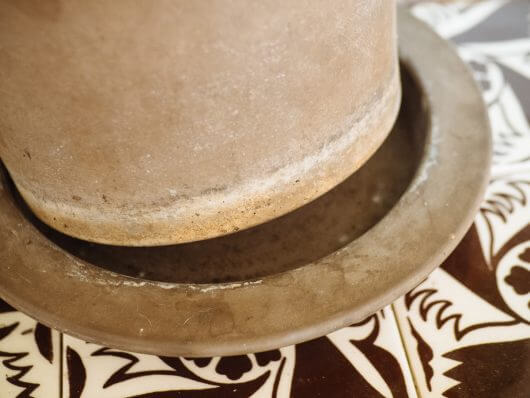
A heavy buildup can eventually lead to wilting, dropping of the lower leaves, brown leaf tips, and reduced growth, as the salts inhibit the plant from taking up water. It seems kind of contradictory — that fertilizer, which is used to promote growth, can actually hinder or harm it — so showering your houseplants should be a chore done once a season, not just spring.
If you’re only showering one or two plants, or multiple smaller plants, you can do so under a sink faucet with a spray head. Otherwise, sticking your plants in the shower or bathtub is the easiest and most effective way to give them a good rinse.
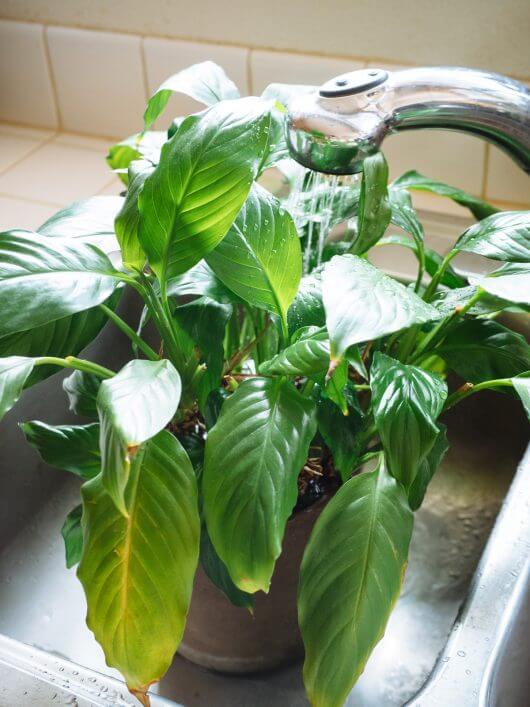
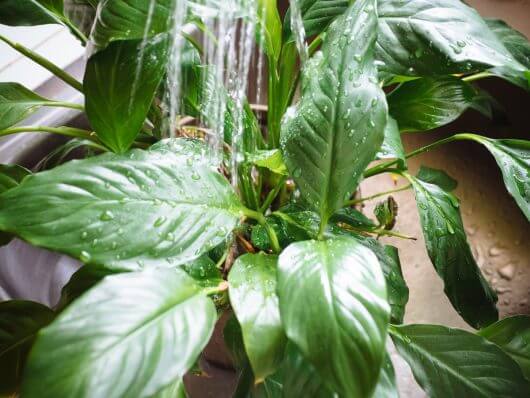
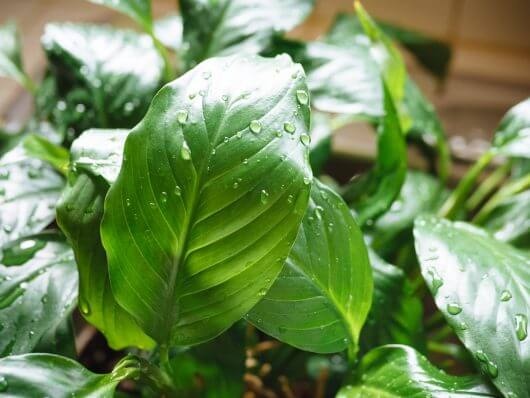
If you see rain in the forecast, you can even just put your plants outside — that’s free water right there! And it’s as pure as you can get, since rainwater has no additives.
(Speaking of additives, if your salt accumulation is mainly due to softened water, you can still shower your plants by collecting the water in a bucket and letting it sit overnight. This allows most of the minerals to settle at the bottom of the bucket. Move your plants to the bathtub, then pour the water over them — remembering to rinse the undersides of the leaves as well — and discard the last one to two inches of water in the bucket.)
Here are a few tips for showering your houseplants:
- Make sure your potted plant has proper drainage.
- Trim any dead, diseased, or discolored leaves, and remove all debris from the soil surface before showering.
- Use plenty of water (at least twice the volume of the pot) to ensure you’re dissolving and flushing all the excess salts from the soil.
- Allow the plants to fully drain before returning them to their saucers or drip trays. Never let them sit in the drained water, as the water can be reabsorbed by the soil and any salts that were washed away will simply go back in the soil.
- Avoid showering plants that don’t like to get their leaves wet (such as African violets, cyclamen, and begonias).
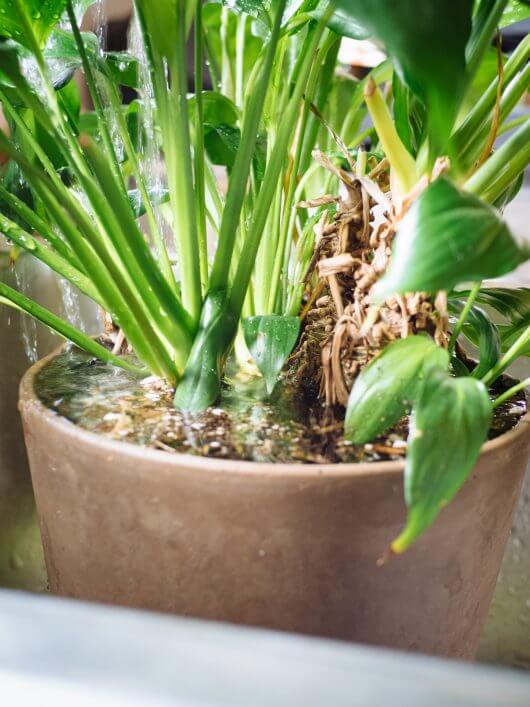
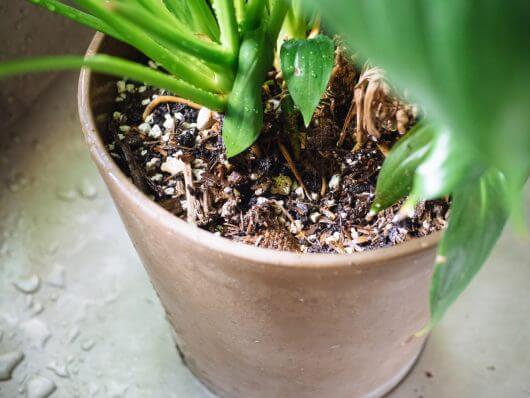
The post Spring Cleaning Tip: Don’t Forget to Shower Your Houseplants appeared first on Garden Betty.
from Garden Betty http://ift.tt/2pzhOWp
No comments:
Post a Comment